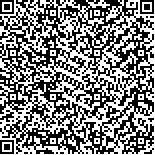| 引用本文: |
-
裴继影,余文峰,胡俊杰,王一潼,王明威,张瑞杰,余克服.有机紫外吸收剂在海洋中的时空分布及其生态风险评价[J].广西科学院学报,2023,39(2):179-191. [点击复制]
- PEI Jiying,YU Wenfeng,HU Junjie,WANG Yitong,WANG Mingwei,ZHANG Ruijie,YU Kefu.Spatio-temporal Distribution and the Ecological Risk Assessment of Organic Ultraviolet Absorbers in the Ocean[J].Journal of Guangxi Academy of Sciences,2023,39(2):179-191. [点击复制]
|
|
| |
|
|
| 本文已被:浏览 512次 下载 676次 |

码上扫一扫! |
| 有机紫外吸收剂在海洋中的时空分布及其生态风险评价 |
|
裴继影1,2, 余文峰1, 胡俊杰1, 王一潼1, 王明威1, 张瑞杰1,2, 余克服1,2
|
|
|
| (1.广西大学海洋学院, 广西南宁 530004;2.广西南海珊瑚礁研究重点实验室, 广西南宁 530004) |
|
| 摘要: |
| 以Web of Science数据库收录的65篇英文文献为研究对象,综合分析近15年来世界各海域海水、沉积物和海洋生物中多种有机紫外吸收剂(Organic Ultraviolet Absorbers,OUVs)的赋存特征和时空分布,并结合已有的毒理学数据,采用风险商(Risk Quotient, RQ)法评估海水中OUVs对海洋生物的生态风险。结果表明,从空间分布上看,近岸海域的OUVs浓度水平普遍高于离岸海域,这可能是由于人类活动对近岸海域的影响较大。从时间分布上看,夏季由于抗紫外线产品使用量增加,导致OUVs的释放量高于其他季节。风险评估结果表明,在全球范围内,二苯酮-3 (BP-3)、甲氧基肉桂酸乙基己酯(EHMC)、奥克立林(OC)、辛基二甲基对氨基苯甲酸(OD-PABA)、阿伏苯宗(AVO)和水杨酸异辛酯(EHS)分别在37.5%、87.0%、100.0%、44.4%、60.0%和60.0%的海域对海洋生物具有中高风险,而4-甲基苄亚基樟脑(4-MBC)在所有海域对海洋生物均无风险。该研究旨在评估OUVs在世界海洋中的污染状态,以期更好地从源头控制和管理OUVs及其对海洋生态环境的影响。 |
| 关键词: 有机紫外吸收剂 海洋 环境介质 时空分布 风险评价 |
| DOI:10.13657/j.cnki.gxkxyxb.20230517.008 |
| 投稿时间:2022-08-26修订日期:2022-11-18 |
| 基金项目:国家自然科学基金项目(42090041,42030502,21665003)和广西自然科学基金项目(2018GXNSFAA281354,2020GXNSFDA297005)资助 |
|
| Spatio-temporal Distribution and the Ecological Risk Assessment of Organic Ultraviolet Absorbers in the Ocean |
|
PEI Jiying1,2, YU Wenfeng1, HU Junjie1, WANG Yitong1, WANG Mingwei1, ZHANG Ruijie1,2, YU Kefu1,2
|
| (1.School of Marine Sciences, Guangxi University, Nanning, Guangxi, 530004, China;2.Guangxi Laboratory on the Study of Coral Reefs in the South China Sea, Nanning, Guangxi, 530004, China) |
| Abstract: |
| Based on 65 English literatures included in the Web of Science database, the occurrence characteristics and temporal and spatial distribution of various Organic Ultraviolet Absorbers (OUVs) in seawater, sediments and marine organisms in various sea areas of the world in the past 15 years were comprehensively analyzed. Combined with the existing toxicological data, the ecological risk of OUVs in seawater to marine organisms was evaluated by Risk Quotient (RQ) method. The results show that the concentration of OUVs in coastal waters is generally higher than that in offshore waters, which may be due to the greater influence of human activities on the coastal waters. In terms of time distribution, the release of OUVs in summer is higher than that in other seasons due to the increase in the use of anti-ultraviolet products. The results of risk assessment show that Benzophenone-3(BP-3), Ethylhexyl methoxycinnamate (EHMC), Octocrylene (OC), Ethylhexyl dimethyl p-aminobenzoic acid (OD-PABA), Avobenzone (AVO) and Ethylhexyl salicylate (EHS) have medium and high risks to marine organisms in 37.5%, 87.0%, 100.0%, 44.4%, 60.0% and 60.0% of the sea areas, respectively, while 4-Methylbenzylidene camphor (4-MBC) has no risks to marine organisms in all sea areas. This study aims to assess the pollution status of OUVs in the world's oceans, with a view to better controlling and managing OUVs from the source and their impact on the marine ecological environment. |
| Key words: Organic Ultraviolet Absorbers marine environmental matrix spatial and temporal distribution ecological risk assessment |
|
|
|
|
|